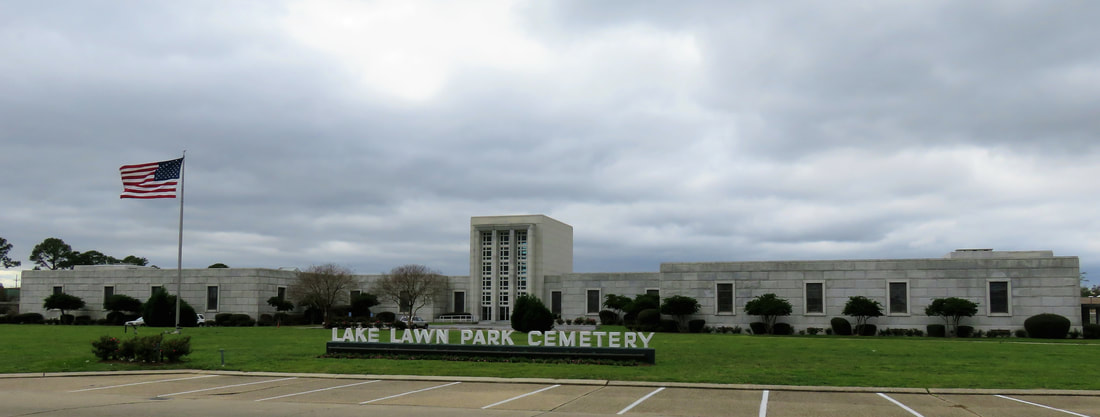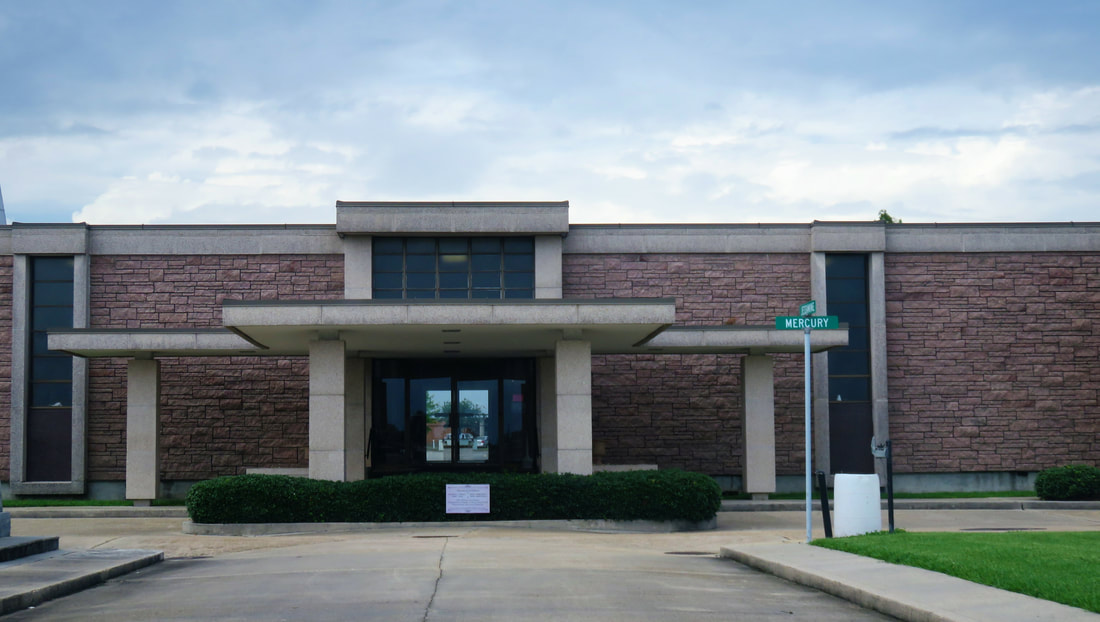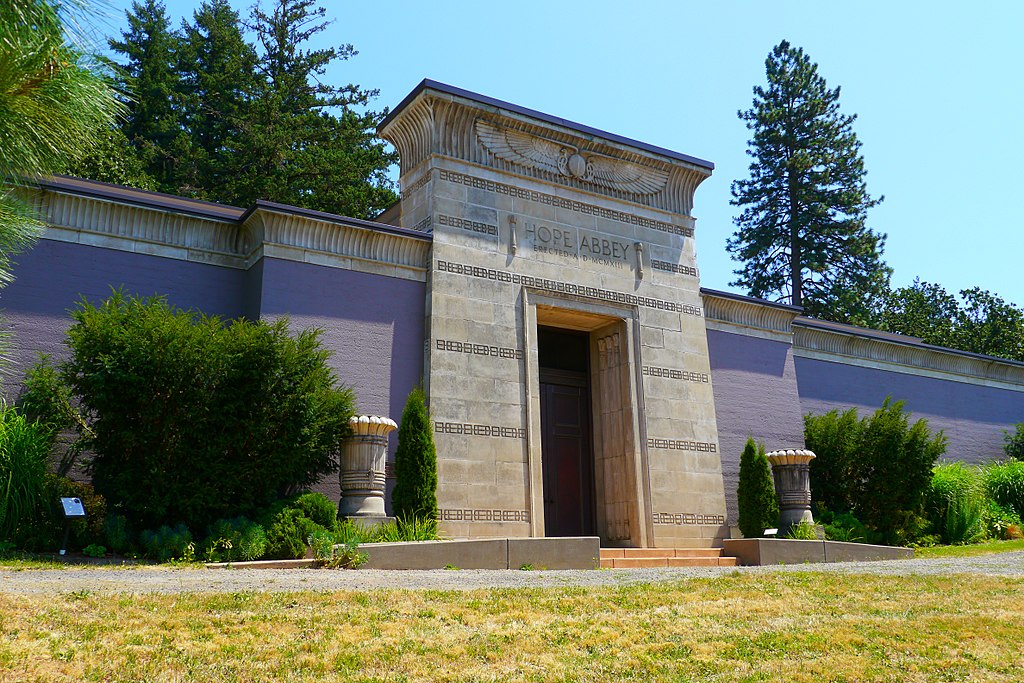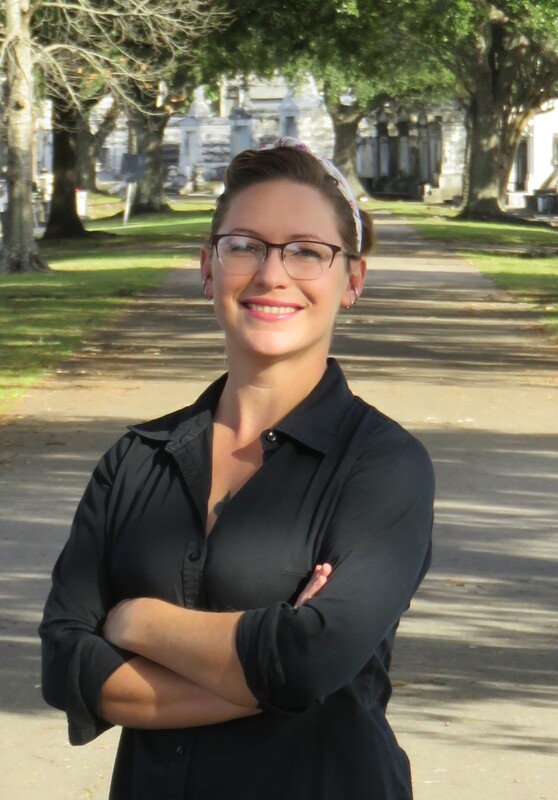|
Kitsch decor, mid-century modern designs, and complex sales schemes... Community mausoleums – multi-vault, indoor structures that house dozens or hundreds of burials – are ubiquitous in the American cemetery landscape. Many that were constructed between the early 1960s and today remain in regular use, maintained by their owners and cherished by their stakeholders. Some have not fared so well. In this series, we examine the two periods of community mausoleum construction in the United States. In this part, we examine their mid-twentieth century popularity from approximately 1950 to 1980. In both parts, we will examine New Orleans’ role in the community mausoleum movement. (You can find Part One here.)
By 1950, the concept of the community mausoleum was forty years old. But the American public itself had seen several generations, a Great Depression, and two World Wars go by. In a way, the original allure of the community mausoleum had become part of American culture itself – the advertising had worked. A culture that forty years previous had held funerals in the home and generally eschewed embalming now understood the funeral home to be part of “tradition” and embalming to be essential to sanitation. But the world had also changed. The gargantuan technological leaps made to fight World War II had come home in the form of stronger concrete, bigger buildings, and an age of unparalleled American prosperity. Where before the community mausoleum was marketed as, in part, affordable, the appeal of affordability was no longer as necessary. The public wanted a new modernity to separate from the modernity understood by their grandparents. And they wanted it to be maintenance free, clean, and without the cobwebs of yesteryear. The new, midcentury modern community mausoleums would deliver. As discussed in Part One, New Orleans cemeteries were overwhelmingly uninvolved with the early twentieth century community mausoleum. With the notable exception of Hope Mausoleum, none were built in the New Orleans area. The midcentury mausoleum would be much more at home within the Crescent City, with more than a dozen constructed. The influx of community mausoleums was timely in that it coincided with shifts in cemetery management as a whole.
1 Comment
Or, how to get rich in cemetery sales without really trying. Community mausoleums – multi-vault, mostly indoor structures that house dozens or hundreds of burials – are ubiquitous in the American cemetery landscape. Today, many that have survived are historic structures. But in their day, they were controversial, revolutionary, modern, and exploitative. In this series, we examine the two periods of community mausoleum construction in the United States, beginning with the 1907-1940 wave of popularity, and revisiting the subject in their mid-twentieth century renaissance. In both parts, we will examine New Orleans’ role in the community mausoleum movement.
In their time, they were exalted as sanitary, “better way,” a “civilized” mode of burial, while their opponents in the cemetery and monument industries called them “mud houses,” “menaces,” and even “tenement vaults.[1]” They were Neoclassical, Art Deco, Gothic Revival, and even chimeras of architectural design. They were the objects of sales speculation as well as sources of affordability in American cemeteries. They were community mausoleums, and hundreds if not thousands of them survive in the American cemetery landscape today. Beginning in 1907 in Ganges, Ohio and ending in Atlanta, Georgia in 1943, the community mausoleum movement of the early twentieth century embodied changes in the funeral industry, advertising, economics, and the way Americans understood death itself. In New Orleans, only one cemetery can lay claim to part of this movement. Hope Mausoleum on Canal Street is the Crescent City’s only answer to the early community mausoleum, although its founders may have disputed that label. Yet, like other community mausoleums, Hope Mausoleum offered the public a novel kind of cemetery, one that it may not have even known it wanted. |
About the Author:Emily Ford owns and operates Oak and Laurel Cemetery Preservation, LLC. Archives
November 2019
Categories
All
|
- About
-
Restoration
- Services
-
Portfolio
>
- Turning Angel Statue, Natchez, MS
- Ledger Monument, Baton Rouge, LA
- Pyramid Statuary, New Orleans, LA
- Bronze and Granite Monument, Carville, LA
- Box Tomb, New Orleans, LA
- Vernacular Concrete Monument, Pensacola, FL
- 1830s Family Tomb, Covington, LA
- 1850s Family Tomb, New Orleans, LA
- 1880s Family Tomb, New Orleans, LA
- Headstone and Monument Restorations, Pensacola, FL
- Society Tomb, New Orleans, LA
- Education
- Blog
- Contact
|
Oak and Laurel Cemetery Preservation, LLC is a preservation contractor in New Orleans, Louisiana, specializing in historic cemeteries, stone conservation, educational workshops and lectures. Oak and Laurel serves the region of the Southeastern US.
|
QUICK LINKS |
CONNECT |
Proudly powered by Weebly





